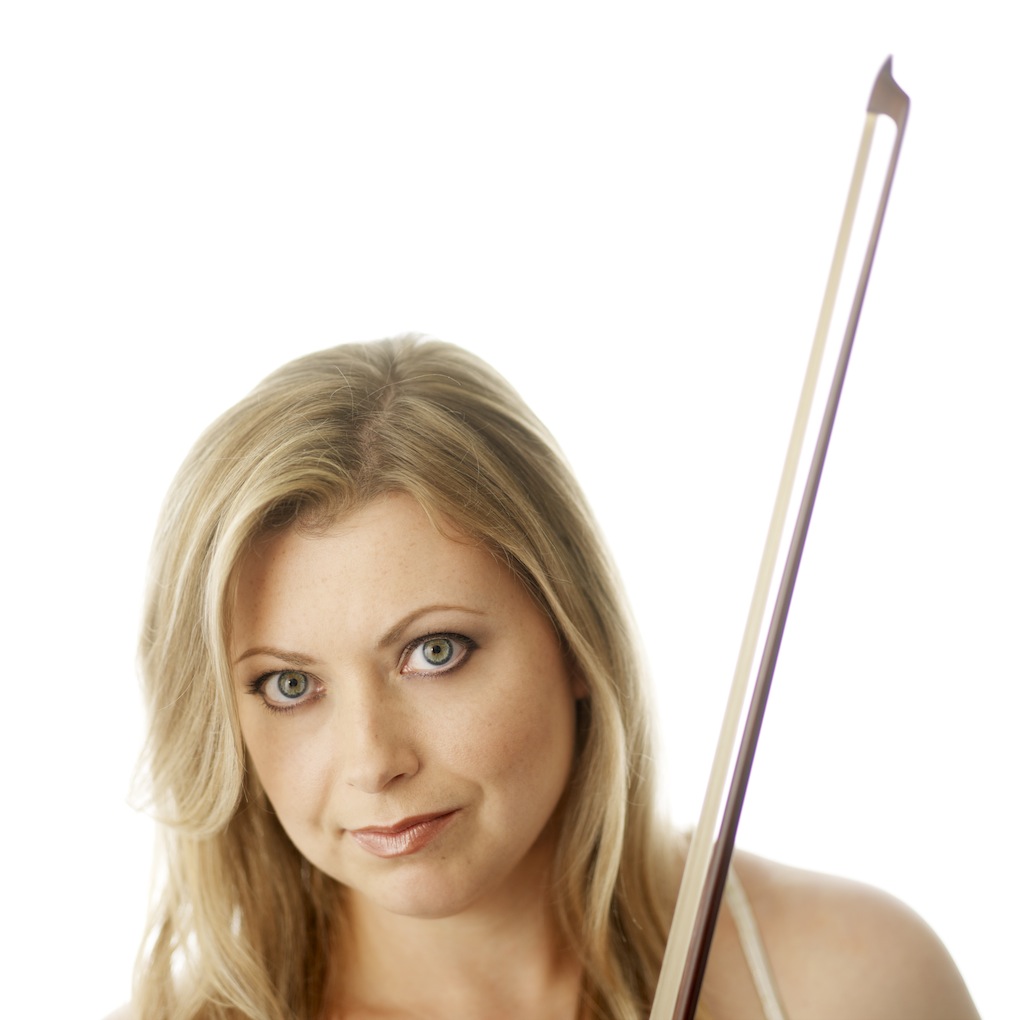A Far Cry deftly mixes two Bachs with the elegiac and English

Violist Helen Callus performed music of Bach and Hindemith with A Far Cry Sunday at Calderwood Hall.
Paul Hindemith was a fast worker.
In London for a scheduled performance with the BBC in January 1936, he learned of the death of King George V. The German composer, penned, in a single afternoon, a somber homage for the deceased monarch. Trauermusik for viola and string orchestra aired over the radio that same evening. Hindemith played the solo part.
Sunday afternoon at Calderwood Hall, A Far Cry, the Gardner Museum’s resident string orchestra, and British violist Helen Callus offered a moving performance of this pensive and stirring work.
In its brief, taut form, Trauermusik spans a wide emotional range. The musicians of A Far Cry—they refer to themselves as Criers—were in top form, their rich ensemble blend bringing out the music’s dark lyricism. Callus’s amber-hued viola tone added palpable weight to the sumptuous, yearning phrases. The work’s storm and stress broke with the final chorale, a quotation of Here I stand before the throne, which the Criers played with a pastoral glow. When the prayerful lines resolved into serene octaves, Callus wove a beautiful arching melody into the resonant frame.
Earlier in the afternoon, the violist and ensemble teamed up for a spirited reading of J. S. Bach’s Viola Concerto in E-flat. This lost work exists today in a scholarly reproduction that Wilfried Fischer pieced together from portions of the composer’s cantatas and Harpsichord concerto in E major BWV 1053 (not BWV 49 as stated in the program notes). The resulting composition maintains the energy and lively inner voicing so common to Bach’s instrumental music.
Save for a few untidy ensemble attacks, the strings played the outer movement’s ever-spinning lines with clarity. Callus added a sweet lyrical quality to her own winding and tripping melodies that answer. The violist and company were most affecting in the second movement, an embellishment upon the aria “Stirb in mir, Welt” from the cantata Gott soll allein mein Herze haben. Callus, with resonant, silvery timbre and expressive phrasing, brought out the music’s full spectrum of light and shade.
The Edwardian luster of Elgar’s Introduction and Allegro complemented the dark recesses the ensemble explored previously. This difficult work poses a challenge to all sections of the ensemble.
A Far Cry was more than up to the task, offering a perceptively phrased, and plush-toned rendering. Thin strands of melody, originating from a quartet of strings, spread into the full ensemble, where they wove together into a colorful tapestry of sound. Melodic fragments coalesced into pillars of harmony before flowing out again, and the “devil of a fugue” (Elgar’s description) that concludes the piece moved with whipcrack energy, drawing warm applause from the audience before the musicians could pluck their final note.
Rounding out the program were two works of courtly grace. Carl Philipp Emanuel Bach’s Sinfonia in B-flat Wq. 182 No. 2, with its jagged themes, driving rhythms, and abrupt shifts in mood, made a fitting opener. The Criers played the sorrowful lines of the second movement with sweet, song-like touch. The craggy melodies of first movement and fiery finale moved with urgency.
To close, A Far Cry performed selections from Purcell’s King Arthur. The music in this opera of 1691, as with the composer’s Indian Queen, is incidental to the plot. Yet the orchestrated dances and songs that comprise this suite make for a happy half-hour of listening. The airs “Fairest Isle” and “How blest are Shepherds” featured sensitive playing and dexterous phrasing from a violin trio and harpsichord. The full ensemble played the two hornpipes with grounded, sure-footed feel, and the “Grand Dance” that concluded the set seemed to lift off of the ground in its gentle lilt.
The Callithumpian Consort will perform the world premiere of Lee Hyla’s MIGRACIÓN and other works by the composer 7 p.m. Thursday at Calderwood Hall. gardnermuseum.org
Posted in Performances




